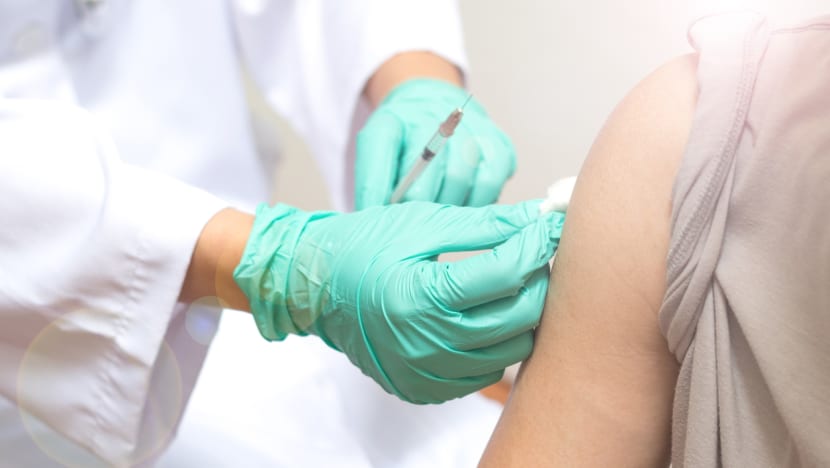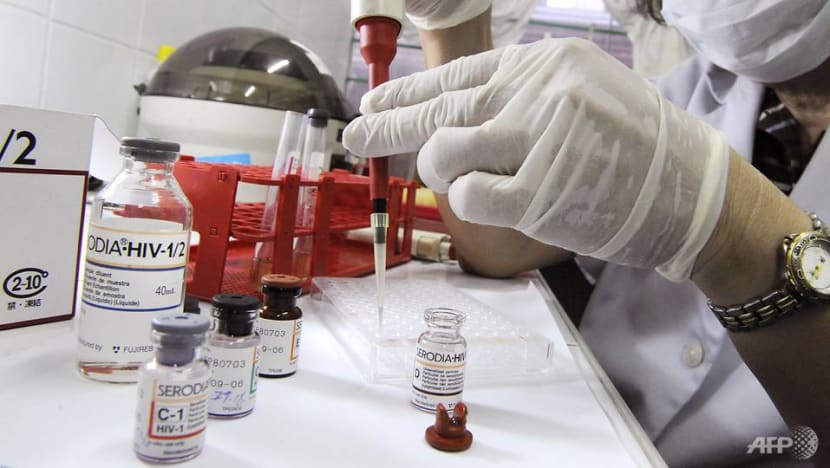Commentary: After 40 years of AIDS, why do we still not have an HIV vaccine?
The best way to eradicate a disease is to have an effective vaccine. Yet despite almost 30 years of intensive research and multiple clinical trials, an HIV vaccine remains elusive, says Prof Roy Chan, president of Action for AIDS Singapore.


This audio is generated by an AI tool.
SINGAPORE: In April 1984, after it was announced that researchers had discovered HIV, the virus that causes AIDS, then US Secretary of Health and Human Services Margaret Heckler made a bold prediction - that a vaccine would be available “in about two years”.
Forty years later, an HIV vaccine remains elusive. This is especially frustrating seeing as it took scientists less than one year to develop the COVID-19 vaccines.
At its peak in 1995, the spread of HIV infection seemed unstoppable, with more than 3.2 million people acquiring HIV that year. By 2004, AIDS was claiming 2 million lives a year.
Today, data from the Joint United Nations Programme on HIV/AIDS (UNAIDS) shows that new HIV infections have fallen drastically to 1.3 million infections in 2022. AIDS-related deaths have also dropped, to around 630,000 in 2022. Furthermore, almost 30 million of the estimated 39 million people living with HIV globally are now receiving anti-retroviral (ARV) treatment.
These positive results have encouraged leaders and experts around the world to commit to end AIDS as a public health threat by 2030.
In Singapore, there are currently about 7,000 people living with HIV, out of a total of 9,435 cumulative infections since 1985. The number of newly diagnosed infections has been falling steadily since 2017, but the majority continue to be detected at a late stage.
PROVEN PATHS TO TREAT AND PREVENT HIV
The sustained decrease in new infections globally and in Singapore are the result of several factors. These include the scale-up of access to ARV medications leading to the drastic decrease in infectiousness of persons with HIV, often referred to as Undetectable = Untransmittable or U = U. This underlines the central role that HIV testing, early detection, rapid referral for treatment, and maintenance on therapy plays in the HIV control programme.
ARV medications have also been used to prevent HIV infection. This is called pre-exposure prophylaxis or PrEP. When taken correctly and consistently, PrEP has been shown to be extremely effective in preventing HIV infection. Unfortunately, access to PrEP is far from satisfactory in many places, including Singapore. The major obstacles include the high price of ARV medication and routine laboratory tests needed for a properly administered PrEP programme.
HIV medications in Singapore have been subsidised starting from 2020. Current prices for subsidised HIV medications in government hospitals range from S$50 to S$400 per month depending on the combination of medications, with an average price of S$230 per month. Treatment is lifelong as there is no cure yet for HIV infection. PrEP medications on the other hand are not subsidised in Singapore.
Condom promotion and safer sex behaviour cannot be abandoned, they no doubt still play an important part in HIV prevention. However, with no evidence of an increase in condom usage in the last decade, we can probably ascribe the drop in new infections mainly to U = U and PrEP adoption.
HOLDING OUT HOPE FOR AN HIV VACCINE
Historically, the best way to eradicate a disease is to have an effective vaccine. Yet despite almost 40 years of intensive research and multiple clinical trials, an HIV vaccine remains elusive.
This is not for a lack of funding - it is estimated that US$17 billion was invested globally in vaccine research and trials from 2000 to 2021 alone, coming largely from governments, and to a lesser extent from pharmaceutical companies and philanthropies.
HIV is one of the fastest-mutating viruses ever studied, with various strains and subtypes that make a globally effective vaccine difficult to develop.
Another hurdle is the absence of appropriate animal models to test the vaccines on. Finally, there is still limited information regarding what constitutes natural immune responses that protect against HIV infection and that can be emulated in vaccine design.
This decade alone, four vaccine trials have been stopped because of lack of efficacy. The only study that showed modest result was RV144, which was conducted on more than 16,000 participants in Thailand between 2003 and 2006. The study showed that the vaccine efficacy against acquisition of infection was 31.2 per cent.
The treatment would have needed a 50 per cent protection rate for regulatory approval.
Nevertheless, whilst these vaccine trials may have proved futile, they have yielded valuable insight needed to improve vaccine design and vaccination schedules.
The HIV-1 vaccine field is now at a crossroads. There are at present no active clinical trials for HIV vaccines. However, research in vaccine development is still ongoing in the laboratory and with animal studies. It is now focused on the development of techniques to induce broadly neutralising antibodies. Several strategies are currently being pursued, including B-cell lineage vaccines, germline-targeting vaccines, and epitope-targeted vaccines.
An HIV vaccine, even one of moderate efficacy, would be very cost-effective and have a lasting and substantial public health impact as part of a comprehensive prevention response.

KNOCKING DOWN BARRIERS TO TESTING AND TREATMENT
Until there is a vaccine, efforts must be redoubled to diagnose and treat as many persons with HIV infections as possible. To do this, barriers to HIV testing must be knocked down - by making testing easier and cheaper, scaling up PrEP adoption, maintaining condom and safer sex promotion, and overcoming HIV-related stigma and discrimination.
Singapore’s move earlier this month to amend its HIV disclosure law is enlightened and the right thing to do. People living with HIV will no longer be required to inform their sexual partners of the risk of contracting the virus if they meet certain conditions. These include maintaining stable and undetectable blood viral loads for at least six months, having an undetectable viral load test result dated nine months or less before the sexual activity in question, and adhering to treatment up to the time of the sexual activity.
The amendment is based on scientific evidence that HIV-infected persons optimally treated with anti-retroviral medications and who achieve undetectable levels of virus in the blood are not infectious to others. We hope that this amendment will encourage sexually active persons to go for HIV testing and get on treatment as soon as possible if found to be positive.
The most successful HIV responses put people first, confront inequalities, uphold human rights, and forge trust between public authorities and affected communities. These principles remain fundamental in our collective efforts to combat HIV and foster a healthier, more inclusive society.
Prof Roy Chan is President, Action for AIDS Singapore.


















